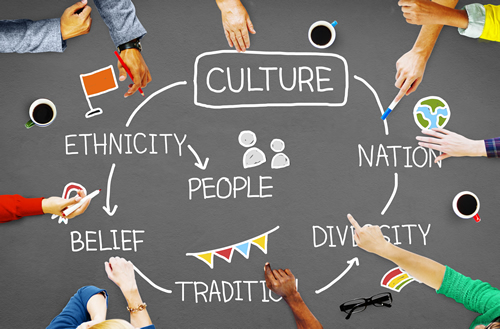Education is not solely about academic knowledge; it is also a platform for shaping individuals’ values, beliefs, and understanding of the world. In recent years, the concept of culture in education has gained significant attention as educators recognize its profound impact on students’ holistic development. This article explores the role of culture in education, the importance of cultural competence, strategies for addressing biases and stereotypes, the benefits of culturally inclusive education, and the challenges faced in implementing cultural education initiatives.
Culture in education refers to the integration of diverse cultural perspectives, traditions, and practices within the educational system. It recognizes the unique backgrounds of students and promotes an inclusive learning environment that respects and values cultural differences. By incorporating culture into education, we can create a more meaningful and relevant educational experience for students.
The Role of Culture in Education
A. Cultural diversity in the classroom
Cultural diversity in the classroom refers to the presence of students from various cultural backgrounds. It enriches the learning experience by exposing students to different perspectives and fostering a sense of global citizenship. However, it also presents challenges such as language barriers, cultural misunderstandings, and stereotypes.
B. Culturally responsive teaching
Culturally responsive teaching is an approach that acknowledges and integrates students’ cultural backgrounds into the learning process. It emphasizes the importance of creating a culturally inclusive classroom where students’ identities and experiences are recognized and respected. Culturally responsive teaching involves using culturally relevant instructional strategies, materials, and assessments that cater to diverse learners.
Promoting Cultural Competence in Education
Cultural competence refers to the ability to interact effectively with people from different cultural backgrounds. It plays a crucial role in fostering inclusive educational environments. Educators need to develop cultural competence to effectively engage with diverse students and create a supportive learning atmosphere.
A. Developing cultural competence among educators
To develop cultural competence, educators should undergo training and professional development programs that provide insights into cultural diversity and its impact on education. Schools can also create inclusive learning environments by promoting diversity among staff, involving families and communities, and integrating cultural awareness into school policies and practices.
B. Incorporating culturally relevant content in the curriculum
To make education more culturally inclusive, it is essential to incorporate culturally relevant content in the curriculum. This includes using multicultural literature and resources that reflect the experiences and perspectives of diverse cultures. Celebrating cultural events and traditions can also create opportunities for students to learn about different cultures and foster respect and appreciation.
Addressing Bias and Stereotypes in Education
Bias and stereotypes can negatively impact students’ educational experiences, perpetuating inequalities and limiting opportunities for certain groups. It is crucial for educators to recognize and challenge their own biases and create a safe and inclusive learning environment that values diversity.
A. Recognizing and challenging biases in the classroom
Implicit bias, unconscious attitudes or stereotypes that influence our actions and decisions, can unintentionally shape interactions in the classroom. Educators should actively engage in self-reflection, participate in diversity training, and implement strategies to reduce bias in teaching practices. This may include using diverse examples, avoiding generalizations, and encouraging equal participation among students.
B. Combating stereotypes and promoting inclusivity
Creating a safe and respectful learning environment is essential for combating stereotypes and promoting inclusivity. Educators can encourage open dialogue and empathy among students, challenge stereotypes through discussions and assignments, and actively address incidents of bias or discrimination. By fostering positive relationships and promoting cultural understanding, stereotypes can be dismantled, and inclusivity can thrive.
The Benefits of Culturally Inclusive Education
Culturally inclusive education offers numerous benefits for students, both academically and socially.
A. Academic benefits
In a culturally inclusive environment, students are more engaged and motivated to learn. Exposure to diverse perspectives and ideas enhances critical thinking and problem-solving skills. Students develop a broader worldview and are better equipped to navigate the complexities of the globalized world.
B. Social and emotional benefits
Culturally inclusive education fosters empathy, respect, and understanding among students. By learning about different cultures, students become more tolerant, appreciative, and accepting of diversity. They develop interpersonal skills and build positive relationships, which contribute to their social and emotional well-being.
Challenges and Solutions for Implementing Cultural Education
While the integration of culture in education brings significant benefits, it also presents challenges that need to be addressed for successful implementation.
A. Lack of resources and support
Securing funding for cultural education initiatives can be challenging. Schools and educational institutions should actively seek financial support from governments, foundations, or community organizations. Collaboration with relevant stakeholders, such as cultural institutions and community leaders, can also provide valuable resources and support.
B. Overcoming resistance and addressing misconceptions
Resistance to cultural education may arise from misconceptions or fears about its impact on traditional curriculum and values. Educators should effectively communicate the value and benefits of cultural education to stakeholders, including parents and administrators. By addressing misconceptions and providing evidence of positive outcomes, resistance can be reduced, and support for cultural education can be garnered.
Culture in education plays a vital role in creating inclusive learning environments that celebrate diversity and promote cultural understanding. By embracing cultural diversity, implementing culturally responsive teaching practices, addressing biases, and promoting cultural competence, educators can provide students with a rich and meaningful educational experience. Culturally inclusive education not only benefits individual students academically and socially but also contributes to building a more inclusive and equitable society.
In conclusion, education that embraces cultural diversity and fosters cultural competence is essential for nurturing well-rounded individuals who are prepared to thrive in a global society. By addressing biases, incorporating culturally relevant content, and promoting inclusivity, educators can create an environment where every student feels valued and understood. Moreover, as we consider the importance of diverse educational experiences, it’s worth noting the growing interest in Arabic language learning as part of a broader commitment to cultural education. This approach not only enhances students’ academic and social development but also contributes to a more inclusive and culturally aware society.




